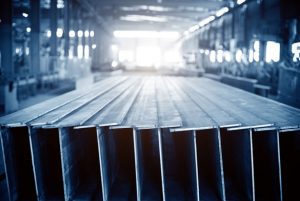China’s Drop in Steel Exports Could be Temporary
Li Lizhang, the chairman of state-owned mill Fujian Sangang Group Co Ltd, is quoted in Reuters as saying exports of steel products may continue to fall this year, having plunged by over 30% last year to 75.43 million tons.
Need buying strategies for steel? Try two free months of MetalMiner’s Outlook
China produced 831.73 million tons of crude steel last year. The country has been trying to eliminate excess capacity, in part to assuage global concerns about excess capacity flooding global markets. But, in reality, it’s more because it realizes overcapacity in its steel industry leaves all domestic producers in a precarious position and sees logic in driving the cleanup in favor of its state-owned producers rather than leaving the market to possibly favor the private sector – not what an increasingly state-centered Beijing wants at all.
Whether Li is promoting the reduction in exports as a counter to allegations abroad that China is harming global steel markets with its exports or whether we should take his ongoing linkage to the fight against pollution at face value is up to the reader. It may be that it is a case of two birds with one stone, but one suspects the timing, straight after President Trump’s 25% tariff on steel imports, is no coincidence.
Li’s comments regarding further production curbs is interesting, though, saying the steelmaking hub of Tangshan in Hebei province will extend production restrictions for another eight months after current curbs expire next week, according to the Reuters report. Production curbs would not be limited to the smog-prone region of Beijing-Tianjin-Hebei, according to Li, who added “other regions will also see restrictions if pollution levels exceed the limits.”
Beijing’s drive to shutter production capacity across a range of environmentally harmful industries has been broadly successful.
But what is clear is that smog reduction was not the only objective.
MetalMiner’s Annual Outlook provides 2018 buying strategies for carbon steel
State-owned enterprises have benefited at the expense of the private sector with new steel and aluminum capacity coming onstream to partially replace the older shuttered plants. Permits for new plants seem to have favored the state-sector producers over the private sector; contrary to the position 18-24 months ago, the state sector is doing very well at present.



One Comment
Good news, especially for steel production in South East Asia where much of steel manufacturers are under heavy oppression from Chian Steel industry.
Thank you for your informative and insightful article.